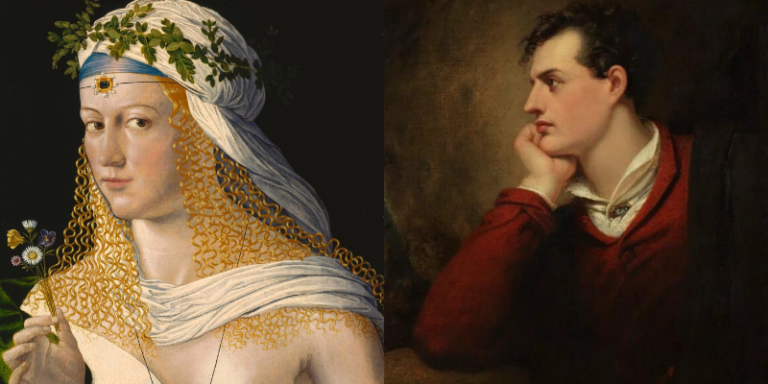“Mad, bad, and dangerous to know” was my introduction to Lord Byron at the age of 16. In English class we were analyzing “So We’ll Go No More A Roving” and our teacher chose to focus on the eroticism of the line . Byron, even in the classroom, was a byword for the infamous and erotic.
This year is the bicentennial of Byron’s death. He died at 36 of a fever in Missonlonghi where he had arrived to fight for Greek freedom. Last year I was asked to be Poet in Residence at the Keats-Shelley House Museum in Rome, a house in the city center next to the Spanish steps, where Byron, Percy Bysshe Shelley, and John Keats lived.

The house is situated next to the Piazza Di Spagna, and I recall the quiet of the museum each time I unlocked the heavy door, walking up the flights of stairs to my apartment on the third floor. I think of the coolness of the apartment and the high ceilings embossed with blue and gold; the chandelier above my bed and who else may have lay beneath it, remembering John Keats had died in the room below me. The museum and its staff honor the legacy of the Romantic poets beautifully.
Had the building become a bank or a shoe shop, perhaps Keats’ ghost may have had reason to appear in protest. George Gordon Byron was born on January 22nd, 1788, the only child of Captain John Byron and Catherine Gordon. He came from a long line of dysfunction and suffered abuse as a child, eventually becoming famous overnight for his poetry when his first two cantos of “Ch.
















